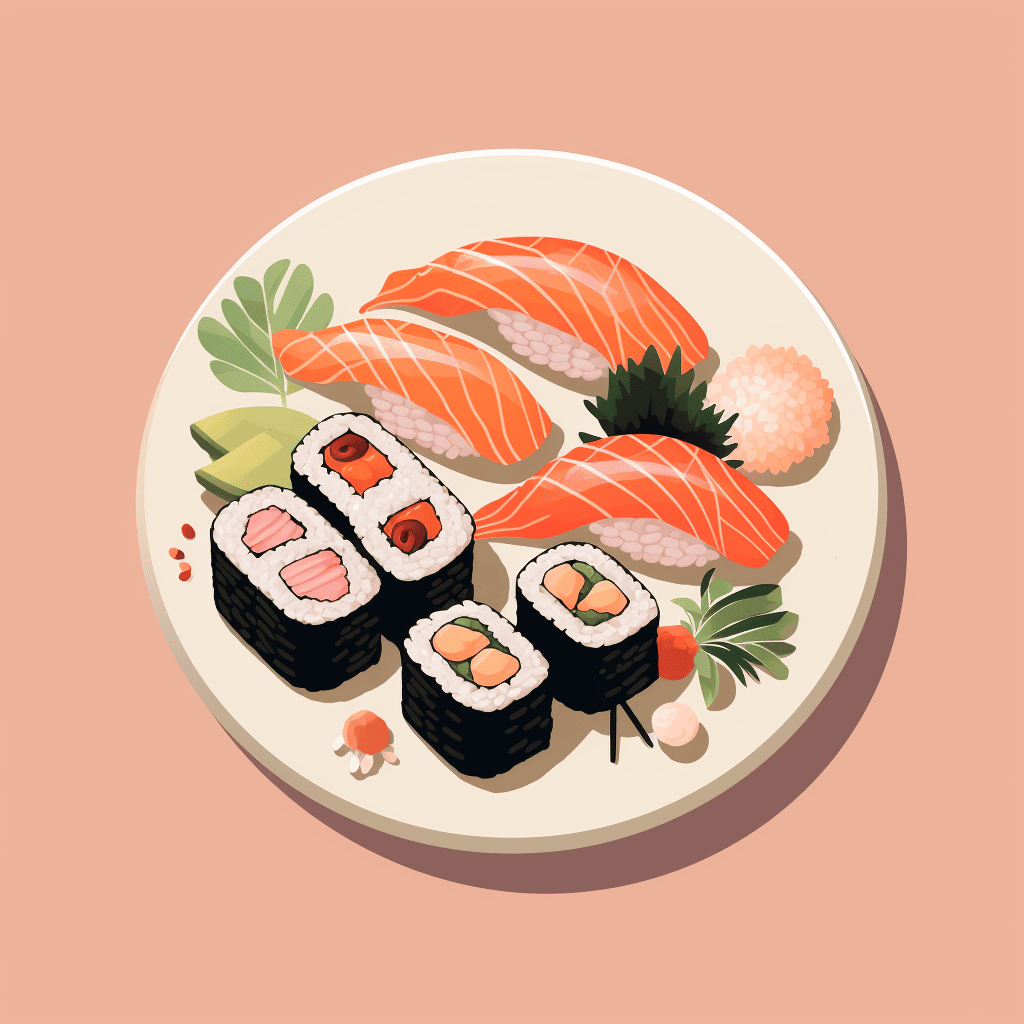You're about to learn about a key element that plays a vital role in how we act and react without even thinking about it — the unconditioned response. This fundamental, reflexive response is part of what makes you uniquely human, influencing your daily life in more ways than you might realize.
An unconditioned response is an automatic reaction to a stimulus that occurs naturally, without any prior learning or training.
It's a raw, uninhibited action that your body knows how to perform from the moment you're born, like pulling your hand away from a hot stove. This kind of response is central to the study of human behavior and is a cornerstone concept in the field of psychology.
What is an Unconditioned Response?

In the realm of psychology, the term "unconditioned response" often pops up. Imagine you're walking through a quiet garden, and suddenly a bee buzzes by your ear. Without thinking, you flinch away.
That instant flinch? That's an unconditioned response. You didn't need to learn it; your body just knew what to do. It's a reflex that comes naturally. It's an unlearned response.
An unconditioned response occurs when something in your environment, like the buzzing bee, triggers a reaction. This trigger is called an unconditioned stimulus. The sound of the bee is not something you have to study to react to; it’s like a built-in alarm system.
An unconditioned stimulus naturally triggers an unconditioned response. It's when the stimulus and response are modified purposefully that it becomes a classical conditioning process.
This stimulus-response link is a basic building block in the study of behavior, laying the groundwork for more complex learning processes.
Understanding how these responses work can shed light on everyday behaviors. If you’ve ever wondered why certain smells can make you hungry or why a particular song can make your heart race, you're thinking about how unconditioned responses shape our feelings and actions.
These automatic reactions are fascinating because they reveal the unspoken language of the body, how it communicates with the brain to keep you safe, and how it prepares you to interact with the world around you.
By exploring these innate reflexes, we begin to see the blueprint of human behavior that psychology helps us to understand and predict.
Where did the Term Come From?
Long before our current understanding of psychology, the concept of an unconditioned response was born. It was in the early 20th century that a Russian scientist named Ivan Pavlov made a discovery that would change the way we think about learning and behavior.
While researching digestion in dogs, Pavlov noticed something curious. The dogs began to salivate not only when they tasted food but also when they saw the lab assistant who usually fed them.
This reaction was automatic, a natural response to what the dogs had come to expect. This was the birth of what Pavlov would call the unconditioned response to an unconditioned stimulus.
Pavlov’s experiment laid the groundwork for what is now known as the classical conditioning theory. It's also known as Pavlovian Conditioning. This is a way of learning where a natural, automatic response to one stimulus becomes linked to a new, unrelated stimulus after they occur together many times.
The beauty of Pavlov's discovery lies in its simplicity and the powerful insight it provides into the mechanics of learning. Pavlov's findings were so fundamental that they earned him the Nobel Prize in Physiology or Medicine in 1904, cementing his work's importance in psychological science.
His research has been modified since then, especially taking into consideration ethics, which are now mandatory guidelines in psychological research.
Unconditioned Response in Classical Conditioning
When you peel back the layers of how we learn, you'll often find classical conditioning at play. This is where our friend, the unconditioned response, truly shines. Picture classical conditioning as a dance between what naturally happens and what we learn to associate with it.
In the classical conditioning paradigm, a psychology pioneer named Ivan Pavlov showed the world how this works with his famous dogs. These dogs didn't have to learn how to drool when they saw food; it was an unconditioned response. The sight and smell of food, the unconditioned stimulus, naturally made them drool. Now, Pavlov added a twist: he rang a bell every time the dogs were about to get food. After a few times, the dogs started to drool just at the sound of the bell, even if there was no food in sight. The bell became a conditioned stimulus, and the drooling in response to the bell became a conditioned response.
So, unconditioned responses are the knee-jerk reactions we have before any learning has taken place. These are the reactions that don't need any training. You can think of them as the raw reactions that life has hardwired into you, and they set the stage for learning new, complex behaviors. As you get to know these natural reactions, you can better understand how the process of classical conditioning creates the many layers of learned behavior that are piled on top of these foundational reflexes.
29 Examples of Unconditioned Responses
1) Sneezing When Exposed to Bright Light
When you step out into the sunshine and sneeze, this is your body's natural reaction to a sudden increase in light.
2) Jumping at a Loud Noise
A loud sound can make you jump. This quick action is your body's way of getting ready for potential danger.
3) Salivating at the Smell of Food

The smell of tasty food can make your mouth water. This is something your body does on its own to get ready to eat.
4) Blinking When Something Approaches Your Eyes
If something flies towards your eyes, you blink to keep them safe. You don't have to think about it; it just happens.
5) Withdrawing Your Hand from a Hot Object
Touching something hot makes you pull away fast. This reaction helps protect you from getting burned.
6) Shivering in Cold Temperatures
Your body shivers in the cold. It's a natural way to warm yourself up.
7) Sweating in High Temperatures
You start to sweat when it's hot. This helps cool your body down.
8) Coughing When Your Throat Is Tickled
A tickle in your throat can lead to a cough. This helps clear out the tickle.
9) Yawning When Tired or Bored

You yawn when you feel sleepy or not interested in what's happening.
10) Tearing Up from Chopping Onions
Your eyes water when you chop onions. This is your body's way of protecting your eyes.
11) Feeling Nauseous at Unpleasant Smells
Bad smells can make you feel sick. Your body is telling you that something might be harmful.
12) Gagging When Something Is in Your Throat
If something gets stuck in your throat, you gag. This stops you from choking.
13) Pupil Dilation in Dim Light
In a dark room, your pupils get bigger. This lets more light in so you can see.
14) Pupil Constriction in Bright Light
In bright light, your pupils get smaller. This helps protect your eyes from too much light.
15) Heart Racing at a Scary Movie
When something scares you, your heart beats faster. This gets your body ready to deal with the scare.
16) Stomach Growling When Hungry
Your stomach growls when you need food. It's a sign that it's time to eat.
17) Reddening Skin When Embarrassed
When you feel embarrassed, your skin can turn red. This is an automatic reaction.
18) Flinching When Tickled
If someone tickles you, you might jerk away. You don't do this on purpose; it's a reflex.
19) Goosebumps in the Cold
Goosebumps appear when you're cold. This helps trap heat to keep you warm.
20) Squinting in Bright Light
You squint in bright light. This helps you see better by letting less light into your eyes.
21) Stimulus-driven Erection
An erection can happen because of a physical touch. It's not something you decide to have; it just happens.
22) Nausea from Motion
Feeling queasy in a moving car is an automatic reaction to the movement.
23) Stretching When Tired
You stretch without thinking about it when you're tired, to help wake up your body.
24) Belching After Eating
Burping happens on its own after you eat to get rid of extra air in your stomach.
25) Tears When Feeling Pain
Crying because of pain is a natural response that shows you're hurt.
26) Knee Jerk Reaction During a Reflex Test
When a doctor tests your reflexes by tapping your knee, your leg kicks up on its own.
27) The Startle Response to a Sudden Touch
Getting startled by a touch you weren't expecting makes you jump. This is a built-in response.
28) The Grasping Reflex of a Newborn
A newborn baby will hold onto your finger if you touch their palm. This is an instinctive grip.
29) Sudden Panic When Falling
If you start to fall, you feel panic immediately. This is your body's quick way of reacting to the danger of falling.
Unconditioned vs. Conditioned Response
When you learn about how we respond to the world around us, you'll come across two key terms: unconditioned response and conditioned response. They sound similar, but they are quite different.
An unconditioned response is natural. It happens inside you without any learning. For example, if you touch something hot, you automatically pull your hand away. You didn't have to think about it; your body just did it. This kind of immediate reaction is built into you; it's part of being human.
Now, let's talk about a conditioned response. This is a bit different because it involves learning. A conditioned response happens when you learn to associate a new thing with a response that used to be automatic.
There can be neutral stimuli involved, which is a thing that is causing the reaction that hasn't been trained. But if a stimulus is repeatedly paired with a response, the stimulus will become a trigger for the response too. This is called associative learning.
A classic example is when Pavlov's dogs learned to salivate not just at the sight of food but also at the sound of a bell that had been rung before feeding time. The dogs learned to connect the bell with food, so the bell became a new signal for them to start drooling.
They didn't do this naturally; they learned it through experience.
Stimulus generalization is another concept that's important here. Sometimes, a stimulus will cause multiple responses that were unexpected. That means the stimulus has been generalized to other things (responses).
To put it simply, unconditioned responses are like your body's built-in reactions. Conditioned responses are like new reactions that you learn from what happens around you. Both are important, but they work in different ways to help you navigate life.
The Impact of Unconditioned Responses on Behavior
The things your body does without you having to think about them can have a big impact on how you act every day. These are your unconditioned responses.
They're like natural reactions that happen because of something you sense or feel. They can be super helpful.
For example, if you touch a sharp object, you'll quickly pull back your hand. This keeps you from getting hurt.
But these responses do more than keep you safe. They can shape your habits and even your feelings towards different things.
Imagine every time you smell a certain perfume or cologne, you remember someone special. The scent isn’t just a smell anymore; it’s something that brings out a strong feeling without you trying. This is how unconditioned responses can be tied to emotions as well.
Sometimes, these natural reactions can be surprising or even get in the way. Let’s say you always get a bit sick when you're really nervous. That’s not something you choose, it's your body's way of reacting to stress.
Knowing this, you might try to find ways to calm yourself down before big events, which is how understanding your unconditioned responses can lead to changes in how you behave. Your body's automatic actions tell a story about who you are and how you deal with life.
How to Identify an Unconditioned Response in Experiments
When scientists do experiments to learn about our behaviors, they look out for responses that are natural — these are the unconditioned responses. To spot these in an experiment, they look for reactions that don't need any training or learning to happen.
Imagine you're part of a study where they're testing reactions to sounds. If there's a really loud noise and you jump, that's an unconditioned response.
You didn't need anyone to teach you to do that; it's just something you naturally do. Scientists would note that as an automatic reaction to a surprising noise.
To be sure they've got an unconditioned response, researchers also make sure that these reactions happen every time the same thing is present.
If every single time there is a loud noise, and every single person jumps, then they can say that jumping is an unconditioned response to that sudden loud noise. It's all about patterns and consistency.
Lastly, in an experiment, you might also be learning new reactions, which are different from the unconditioned ones.
If after several loud noises you're taught to clap instead of jumping, that clapping is a learned reaction, also known as a conditioned response.
Researchers keep their eyes peeled for these natural reactions because they tell us a lot about basic human nature and our built-in instincts.
Tips for Remembering Unconditioned Response for Tests
Getting ready for a test on unconditioned responses can seem tough, but there are some tricks to make it easier. Here are some tips that can help you remember what an unconditioned response is all about.
First, link the term with a simple action you do every day, like blinking when a gush of wind hits your eyes. This is a perfect example of an unconditioned response because you do it without thinking. Every time you blink this way, let it remind you of what unconditioned means — natural and automatic.
Another tip is to use a catchy phrase or rhyme. For instance, "If it's a reflex that protects, it's an unconditioned response you expect." Phrases like this stick in your mind and can pop up when you're taking your test, helping you recall the definition quickly.
Lastly, you can create a study card with two sides. On one side, write "Unconditioned Response" and on the other, write down a list of automatic actions like sneezing in dust, shivering in cold, or jumping at a loud bang.
These flashcards can be a great way to test yourself and reinforce what you've learned without needing any gadgets or complex tools.
With these tips, you'll have a handy way to keep the idea of unconditioned responses fresh in your mind, making you ready to ace that test. Remember, it's all about making connections that are meaningful to you.
Frequently Asked Questions (FAQ)
1) What exactly is an unconditioned response?
An unconditioned response is an automatic reaction that doesn't require any learning or prior experience. It's a natural behavior that happens in response to an unconditioned stimulus.
2) Can unconditioned responses be changed?
Unconditioned responses are pretty consistent because they are reflexive and not learned. However, over time, they can be influenced by new experiences that lead to conditioned responses.
3) How is an unconditioned response different from a conditioned response?
An unconditioned response happens naturally, like sneezing when you sniff pepper. A conditioned response is a learned response, like feeling hungry when you hear a commercial jingle for food.
4) Why are unconditioned responses important in psychology?
They're important because they help psychologists understand basic human and animal behaviors. These responses are foundational for more complex learning processes.
5) Are unconditioned responses present in all animals?
Yes, all animals exhibit unconditioned responses. They are a fundamental part of an organism’s survival mechanisms.
6) What are some examples of unconditioned responses in humans?
Some examples include coughing when something irritates your throat, blinking when an object comes close to your eye, and sweating when it's hot.
7) Do unconditioned responses ever weaken or disappear?
Unconditioned responses can weaken over time if the unconditioned stimulus is no longer present, but they usually do not disappear completely.
8) Can an unconditioned response be a feeling or emotion?
Yes, emotions such as fear or joy in response to certain stimuli can be considered unconditioned responses.
9) How can understanding unconditioned responses help in everyday life?
Knowing about these responses can help you recognize and understand your own automatic emotional reactions, and those of others, which is useful for managing behaviors and emotions.
10) Are unconditioned responses always the same for everyone?
While there is a lot of consistency in unconditioned responses, individual differences can cause variations, such as different pain thresholds or sensitivities to stimuli.
Conclusion
As you journey through the fascinating landscape of psychology, the concept of the unconditioned response is a fundamental one, offering insight into the natural, reflexive behaviors that are hardwired within us.
These automatic reactions are more than just textbook terms; they're part of the everyday fabric of how you interact with the world.
Understanding unconditioned responses can shed light on the often unnoticed impulses that guide a multitude of actions, from pulling your hand away from a hot surface to feeling your heart race at a sudden loud sound.
These responses are an essential part of your survival toolkit, operating below the level of conscious thought.
